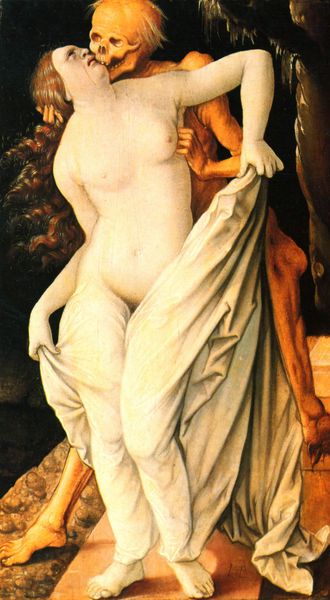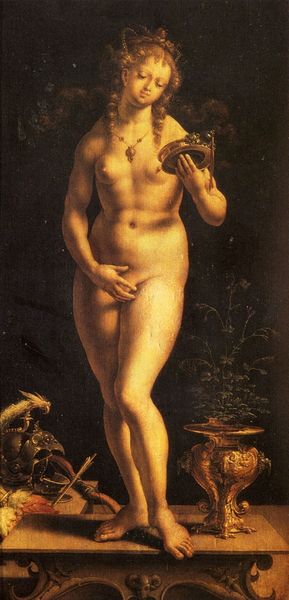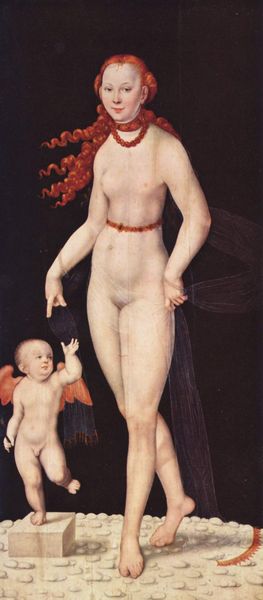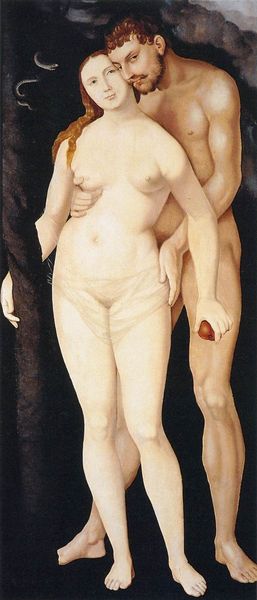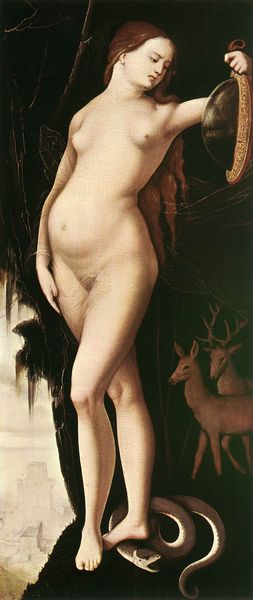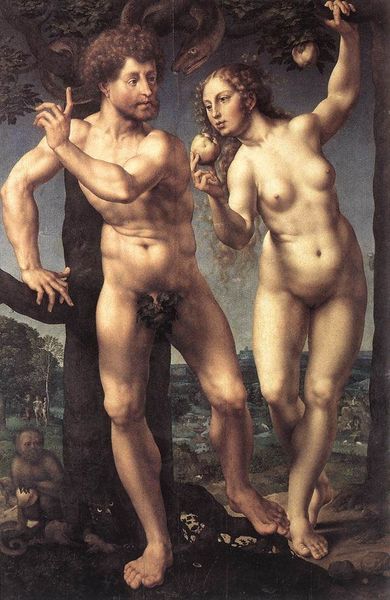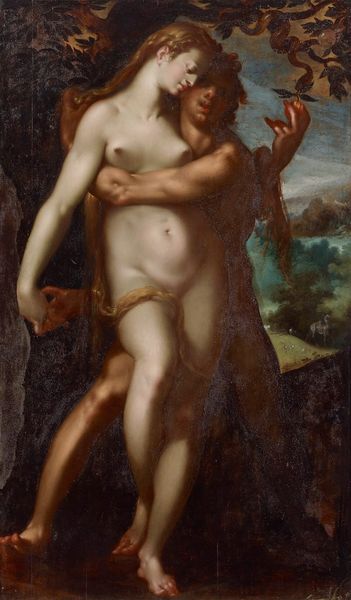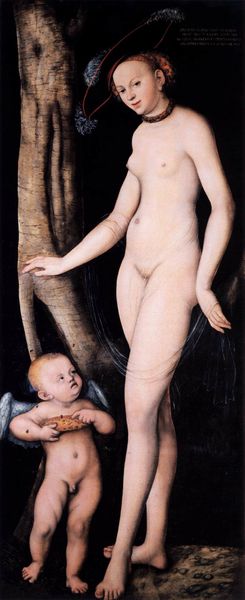
painting, oil-paint
#
portrait
#
allegory
#
painting
#
oil-paint
#
11_renaissance
#
oil painting
#
history-painting
#
northern-renaissance
#
nude
Dimensions: 168 x 74 cm
Copyright: Public domain
Editor: So, this is Albrecht Dürer’s "Suicide of Lucretia," painted in 1518, oil on wood. It's striking… so direct, almost confrontational. What do you see in this piece? Curator: It's a powerful depiction, isn’t it? Beyond the immediate narrative, I see a complex negotiation of female agency and honor within a patriarchal structure. Dürer positions Lucretia as both victim and agent of her own destiny. It is her choice. Editor: Right, the story of Lucretia is about a forced sexual encounter and then suicide as a form of protest. Is Dürer glorifying her action, or critiquing the circumstances? Curator: I don't think it's glorification as much as a stark portrayal of the limited options available to women in that era. How else could she reclaim her violated honor? Dürer seems to be inviting us to consider the brutal societal constraints at play and what alternatives, if any, were open to Lucretia, also to us today. Editor: So it's not just about the historical event, but a commentary on how society forces women into these extreme positions? Curator: Precisely. The act of suicide, while tragic, becomes a form of resistance, a refusal to be defined solely by the violence inflicted upon her. Dürer’s painting then isn't just a retelling of a classical story, it's a powerful interrogation of gender, power, and the price of honor in a deeply unequal society. Editor: Wow, I never thought about it that way, it opens up so much for understanding power dynamics and agency back then… and even now. Thanks! Curator: Absolutely, seeing these historical narratives through a contemporary lens, allows us to challenge ingrained perceptions. It can be unsettling, but it's crucial for genuine understanding.
Comments
No comments
Be the first to comment and join the conversation on the ultimate creative platform.
